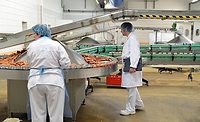

The industry realized years ago when HACCP was developed that finished product testing would not adequately ensure food safety. We had to build safety into the process, as opposed to testing end products. Hence, HACCP was born out of the realization that end product testing was wasteful and inefficient.
In fact, 25 years later, the National Academy of Sciences still agreed. Its report, "An Evaluation of the Role of Microbiological Criteria for Food and Food Ingredients," states: "HACCP provides a more specific and critical approach to the control of microbiological hazards than that achievable by traditional inspection and quality control procedures. Testing of finished products was not an effective means of protecting the consumer and assuring the foods were free of microorganisms of public health significance." The report served as a catalyst for HACCP implementation throughout the food industry, both in the US and around the world. It was a development driven by both regulatory pressures and the industry's realization that the system was an excellent tool for ensuring the production of safe foods.
Yet, here we are spending more and more on testing. Why? One obvious reason is consumer pressure. The public simply does not understand the concept of process control and seems to think that end product testing ensures food safety, which is clearly not the case. To properly ensure safety, the industry would have to test almost everything, which is extremely inefficient.
We as an industry are also at fault for the increasing amount of testing. Rather than reviewing and evaluating a company's HACCP plan as adequate, many buyers (especially those purchasing ingredients or having products backed by a third party) demand that each purchased lot be accompanied by a Certificate of Analysis (COA). So, even though the company has a functioning HACCP plan, it is still obligated to test the end product. Compounding the problem is that many companies that do test end products don't compile the information in a database that can be used to demonstrate long-term compliance, nor do they share this information with clients in an effort to reduce their costs.
As an industry, we need to bring the focus back to process control. To do so, processors need to better utilize the information they collect; educate consumers, regulators and law makers on the role and significance of testing; and enhance communication within the industry to ensure that food safety, sanitation and quality programs are efficient and properly understood.



